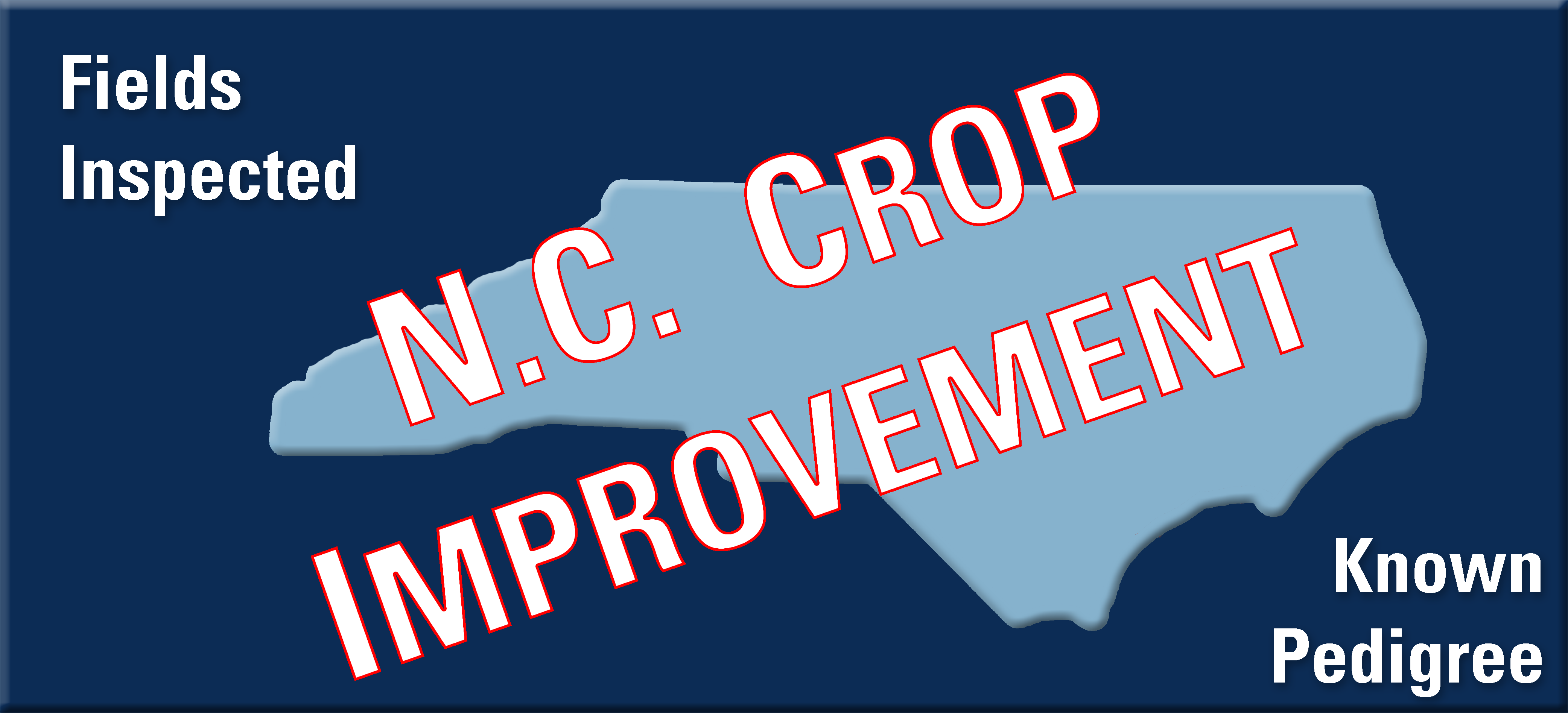|
CC 13 is a flue-cured tobacco hybrid with K326 and R681 similarities. It is a cross between RJR P3 and RJR MS 1 with N. sueveolens sterility. It has K326, K346, RG 81 and NOD 9 genes.
|
|
CC 143 is a typical flue-cured F1 hybrid with pyramidal plant shape, morphologically similar to K 326. At flowering, plants carry between 24 and 35, lanceolate, sessile leaves (with glandular trichomes) arranged alternately on the stalk. Flowers are pink and carried on an inflorescence. CC 143 is a hybrid between RJR MS 1 and CC P BF3 that is resistant to black shank (Phytophthora parasitica) and bacterial wilt (Ralstonia solanacearum).
|
|
CC 27 was released by Cross Creek Seed. It is a tobacco F1 hybrid. CC 27 has a rating of 12 (from the Ph gene) for black shank resistance, a 23 rating for resistance to Granville wilt, and is resistant to tobacco mosaic virus.
|
|
CC 33 is a flue-cured tobacco hybrid tested as RJR 33. It has moderately high resistance to black shank and bacterial wilt and has resistance to root-knot nematodes.
|
|
CC 37 is a hybrid flue-cured tobacco variety with resistance to TMV.
|
|
GF 318
|
|
GL 395
|
|
K 149 was released by Novartis Seeds, Inc. in 1989. It was developed from a number of crosses involving Speight G-28, K 399 and several breeding lines. It has moderate resistance to black shank and high resistance to Granville wilt, is resistant to the southern root-knot nematodes (races 1 and 3) and is susceptible to tobacco mosaic virus.
|
|
K 326 was released by Novartis Seeds, Inc. in 1982. It was developed from a cross of two breeding lines that were derived from crosses between Coker 139 and Coker 319 and McNair 30 and NC 95. The variety has low resistance to black shank and Granville wilt, and has resistance to root-knot nematodes, and is susceptible to mosaic. The yield is much higher than NC 2326 or NC 95; and its quality as indicated by dollars/cwt and quality index is much higher than NC 2326 or NC 95. K 326 is known for its high quality and curability. K 326 has a very low level of weather fleck.
|
|
K 346 was released by Novartis Seeds, Inc. in 1989. It was developed from a cross involving McNair 926 (released as K 326) and a breeding line. It has high resistance to black shank and Granville wilt, is resistant to southern root-knot nematodes (races 1 and 3), and is susceptible to tobacco mosaic. Resistance to black shank is very high. K 346 has average yields and grade index. US PROTECTED VARIETY and can be sold only as a Class of Certified Seed - 1994 PVPA.
|
|
K 394 was released by Novartis Seeds, Inc. in 1984. It was developed from a cross of Speight G-28 and McNair 944. This variety carries high resistance to black shank and low resistance to Granville wilt and is susceptible to root-knot nematodes and mosaic. K 394 has about 20 medium-spaced leaves per plant when topped at 39 inches about 68 days after transplanting and has a low ground sucker count. It produces a very high yield of average quality leaf.
|
|
K 399 was released by Novartis Seeds, Inc. in 1980. It was developed from a cross of (Coker 139 and Coker 319) and NC 95. The yield is higher than NC 2326 or NC 95 and its quality as indicated by dollars/cwt. and quality index is much higher than NC 2326 or NC 95. The data for the number of ground suckers is low. The variety has a moderate number of leaves on a low stalk and plants flower somewhat late. K 399 has high resistance to black shank and Granville wilt and resistance to root-knot nematodes. It is susceptible to mosaic.
|
|
K 730 was released by Novartis Seeds, Inc. in 1993. It was developed from a cross involving K 326 and a Novartis breeding line. K 730 is a K 326 type of tobacco with high resistance to Granville wilt and low resistance to black shank. Upper stalk cures with a high percentage of orange colored leaf. The curability and ease of handling is similar to K 326. It offers resistance to southern root-knot nematodes (races 1 and 3). It has tolerance to brown spot and holds well in the field for delayed harvests. US PROTECTED VARIETY and can be sold only as a Class of Certified Seed - 1970 PVPA.
|
|
McNAIR 944 was released by Novartis Seeds, Inc. in 1973. It was developed from a cross of Speight G-10 and McNair 30. It produces a high yield of average quality tobacco on the basis of government grades. The variety produces a higher percentage of orange colored leaf that is medium in body and texture with a medium nicotine content. The plants are medium tall with a medium number of leaves that are of medium length and width. There are a low number of ground suckers. McNair 944 has moderate resistance to black shank, and low resistance to Granville wilt. It is susceptible to root-knot nematodes and mosaic.
|
|
NC 196 is a cytoplasmic male-sterile (cms) F1 flue-cured tobacco hybrid. Plants of NC 196 grow with a medium green color, have compact leaf spacing and produce 20-22 leaves on a stalk approximately 40 inches in length. It is resistant to race 0 black shank with moderate resistance to race 1. It has moderate resistance to bacterial wilt and is resistant to races 1 and 3 root-knot nematode and is resistant to the tobacco cyst nematode.
|
|
NC 291 is an F1 hybrid developed by NCSU with exclusive release to Cross Creek Seed in 2001. It has very high resistance to black shank race 0 and very low resistance to Granville Wilt. NC 291 is resistant to potato virus Y (PVY) and tobacco etch virus.
|
|
NC 297 was released by NC Agricultural Research Service in 1999. and was exclusively released to Gold Leaf Seed Co. It is an F1. Plants of NC 297 grow with a medium dark green color and produce 18-19 leaves on a 39-inch stalk. Plants flower about the same time as NC 71. Leaves ripen normally and cure to an orange color. NC 297 has a very high rating of resistance to black shank and low to moderate rating for resistance to Granville wilt. NC 297 has resistance to races 1 and 3 of the root-knot nematode. It has a high rating of resistance to tobacco mosaic virus.
|
|
NC 299 is an F1 hybrid developed by NCSU with exclusive release to Cross Creek Seed in 2002. It has very high resistance to black shank race 0 and very low resistance to Granville Wilt. NC 299 is resistant to potato virus Y (PVY) and tobacco etch virus.
|
|
NC 55 was developed from a cross of K 326 and Coker 371-Gold. It has low resistance to black shank and Granville wilt. It has resistance to root-knot nematodes and potato virus Y. It yields nearly the same as K 326 with equal quality and curability. Days to flower, plant height and leaf number are similar to K 326.
|
|
NC 606 is a tobacco variety developed from ‘NC 729’ / ‘NC 82’ by North Carolina Agricultural Research Service with exclusive release to Raynor Certified Tobacco Seed in 2001. It has very good cured-leaf quality. NC 606 has a high level of resistance to black shank and Granville wilt. It is resistant to the common races of the root knot nematode.
|
|
NC 810 is a tobacco variety developed by NCSU with exclusive release to Cross Creek Seed and R.J. Raynor Seed Company in 2001. It has moderate race 0 and race 1 black shank resistance. NC 810 has high resistance to Granville wilt.
|
|
NC 925 925 is a fertile inbred cultivar of flue-cured tobacco. It has bigh black shank resistance, comparable to K346 and relatively high yields. It is susceptible to TMV. It has closely spaced leaves, averaging 18.7 leaves per plant, average plant height, averages 72 days to midbloom.
|
|
RG 17 was developed by RG Seed Company from a cross between K 326 and K 399. It has high resistance to Granville wilt and low resistance to black shank. It produces high yields of good quality tobacco. Compared to K 326, plants of RG 17 flowered about 2 days earlier, were slightly taller with one additional leaf per plant after topping, and had average leaf spacing similar to that of K 326.
|
|
SPEIGHT 168 is a conventional variety developed by Speight Seed Company from a cross between Coker 371-Gold and Speight G-118. It has excellent resistance to black shank, Granville wilt and root-knot nematodes. It produces average yields on a 3 foot stalk with good leaf spacing. Leaves ripen at a moderate rate with excellent curability and are mostly lemon and orange color with medium body. US PROTECTED VARIETY and can be sold only as a Class of Certified Seed – 1994 PVPA.
|
|
SPEIGHT 210 was released by Speight Seed Farm in 2001. It was developed from (SP116 / G-126) // (K346 / G-28). It flowers 9 days later than NC 2326. The flower head type is intermediate when compared to the open flower head type for NC 2326. The internode between leaves is shorter in comparison to NC 2326. It has moderate resistance to race 0 and race 1 black shank resistance, and high resistance to Granville wilt. It has resistance to southern root-knot nematode. US VARIETY PROTECTION APPLIED FOR – 1994 PVPA.
|
|
SPEIGHT 220 was released by Speight Seed Farms in 2004. The resistance rating for black shank is 8 (from Florida 301), and the Granville wilt rating is 16. US VARIETY PROTECTION APPLIED FOR and can be sold only as a Class of Certified Seed - 1994 PVPA.
|
|
SPEIGHT 225 was released by Speight Seed Farm in 2006. It was developed from (Speight 168 x K346) (A95 X Speight 168) this variety flowers 5 days later than NC 2326 and yields just a little bit less than NC 2326, producing 18-19 harvestable leaves in a normal year. The leaves on this variety are closer on the stalk than those of the variety NC 2326. It has a high level of resistance to black shank, bacterial wilt, and Southern root know nematode.
|
|
SPEIGHT 227 was released by Speight Seed Farm in 2006. It was developed from (Speight 151 x K346) (SP 202 X K346). This variety flowers 4 days later than NC 2326 and in a normal year it produces around 19-20 harvestable leaves per plant. The leaves on this variety are spaced closer on the stalk than NC 2326. It has a high level of resistance to black shank, bacterial wilt, and Southern root nematode.
|
|
SPEIGHT 234 was released by Speight Seed Farm in 2006. It was developed from (Speight 168 x K346). This variety flowers 7 days later than NC 2326 and in a normal year it produces around 18-19 harvestable leaves per plant. The leaves on this variety are spaced closer on the stalk than NC 2326. It has a high resistance to black shank, bacterial wilt, and Southern root nematode.
|
|
SPEIGHT 236 is a variety from a four way cross of Speight 168, 177, 179, and 196. It was released in 2005. It averages 70 days to flowering with nearly 18 leaves harvested per plant and leaves fairly closely spaced.
|
|
SPEIGHT G-28 was released by Speight Seed Farm in 1969. It was developed from a cross of Coker 139, Oxford 1-181 and NC 95. It produces a moderate yield and medium quality tobacco. This variety tends to produce orange tobacco that is open, has medium grain and has a relatively low nicotine content. Fairly equal amounts of thin, medium and heavy tobacco were produced by this variety; however, it tends to be heavy bodied. Plants of Speight G-28 are short and have more than 19 leaves. The variety flowers medium to late. It has a low number of ground suckers, has moderate resistance to black shank and Granville wilt, is resistant to Fusarium wilt and root-knot nematodes, but is susceptible to mosaic.
|
|
SPEIGHT G-70 was released by Released by Speight Seed Farm in 1979. It was developed from a cross of Coker 258 and VA 115 and Speight G-10. The yield is much higher than NC 2326 and its quality is about the same as measured by the dollars/cwt. and grade index. Speight G-70 has an intermediate number of leaves on a low stalk, flowers at a medium time and produces a medium number of ground suckers. Speight G-70 has high resistance to black shank, low resistance to Granville wilt and is resistant to root-knot nematodes.
|
|
SPEIGHT H-20 was released by Speight Seed Farms, Inc. in 2000. It is an F1 hybrid. Plants of Speight H-20 produce 18-20 leaves on a 42-inch stalk. Plants flower in about 68 days. Leaves ripen normally and have excellent holding-ability. Performance of Speight H-20 has been similar to Speight G-28. Speight H-20 has a very high rating of resistance to black shank and a high rating for resistance to Granville wilt. Speight H-20 has resistance to prevalent species of the root-knot nematode. It is resistant to tobacco mosaic virus.
|
|
SPEIGHT NF 3 was released by Speight Seed Farm in 1996. It is a “non-flowering” tobacco variety developed from the cross of Speight NF 1 / NC 0007. It flowers about 10-12 days earlier than all other commercial “non-flowering” types of tobacco. Leaf midrib has no arches; leaf color is green; leaf shape is broadest at middle of leaf; acuminate leaf shape; angular venation pattern; smooth leaf surface; leaf margin is not wavy and is not recurved. Plant form is columnar. Flowers are pink and flower head habit is intermediate. It has high levels of resistance to black shank and Granville wilt. It is resistant to Fusarium wilt, root- knot nematode, and brown spot. US PROTECTED VARIETY and can be sold only as a Class of Certified Seed – 1994 PVPA.
|
|
VA 119 is an open-pollinated flue-cured tobacco variety. Medium height, averaging 18 harvestable leaves, 71 days to flower, and medium leaf ripening/maturing.
|


